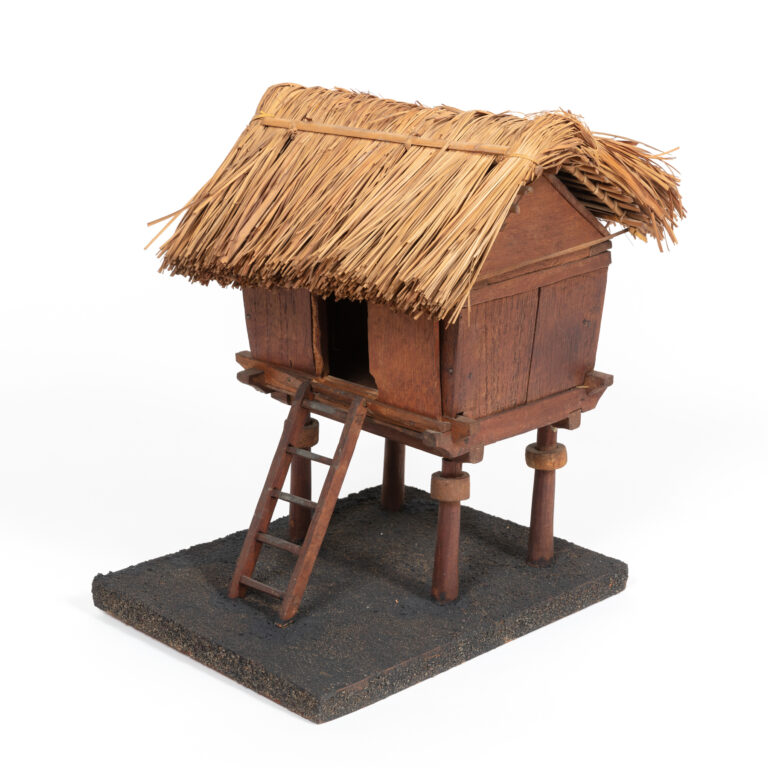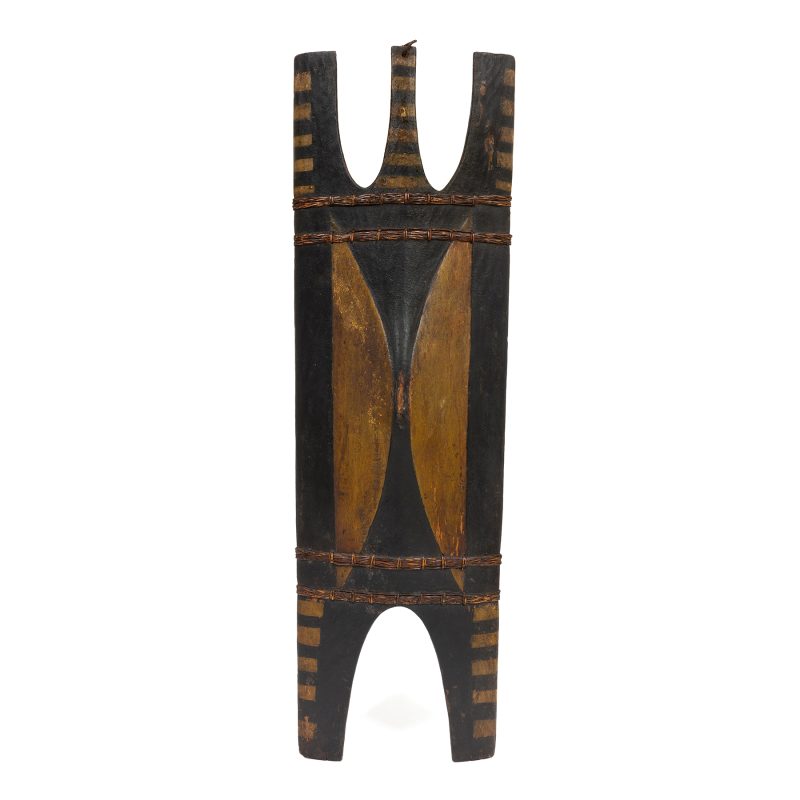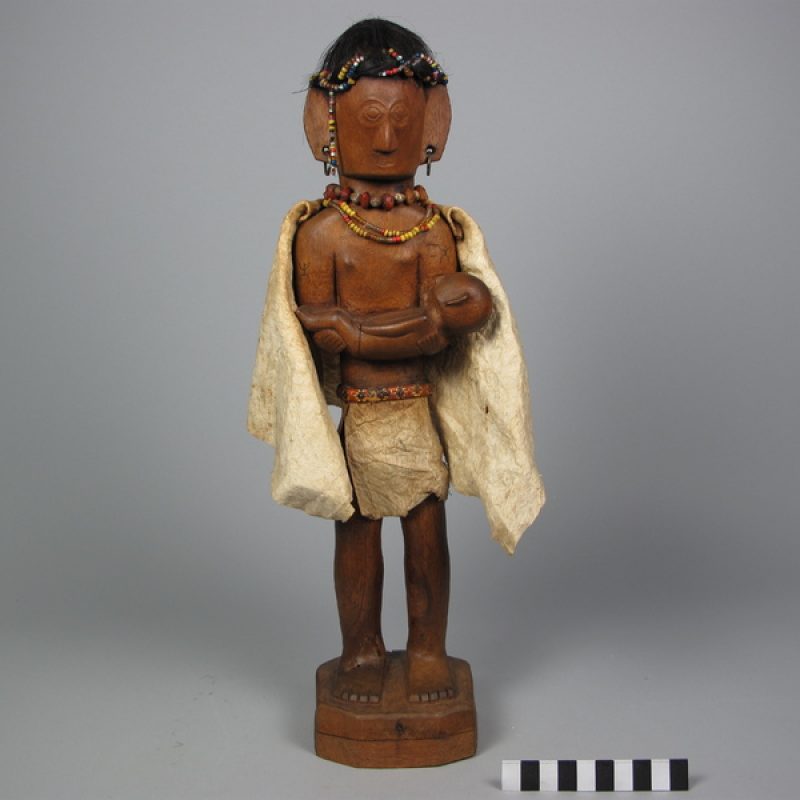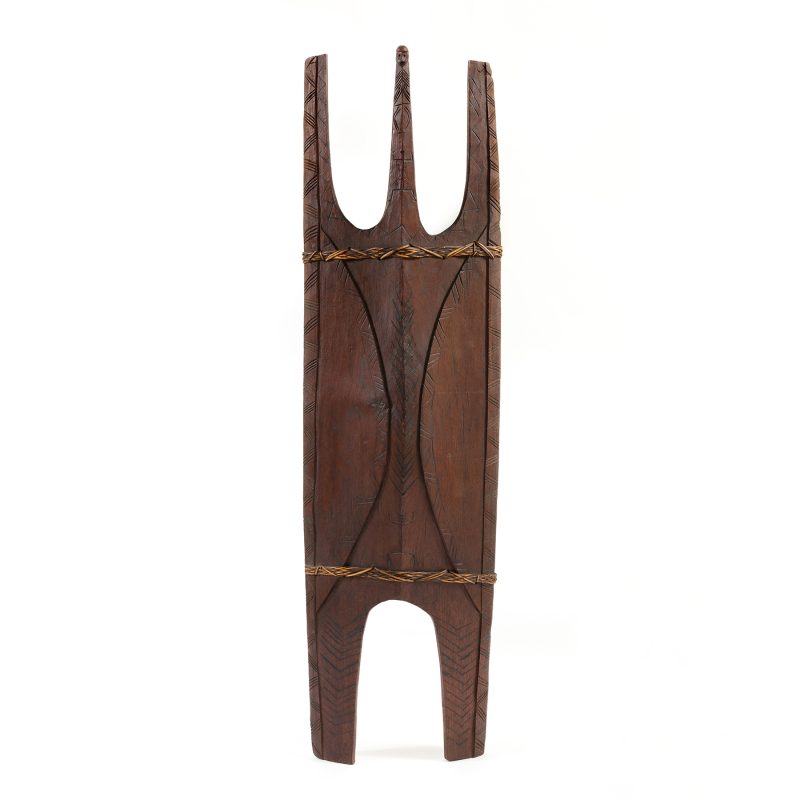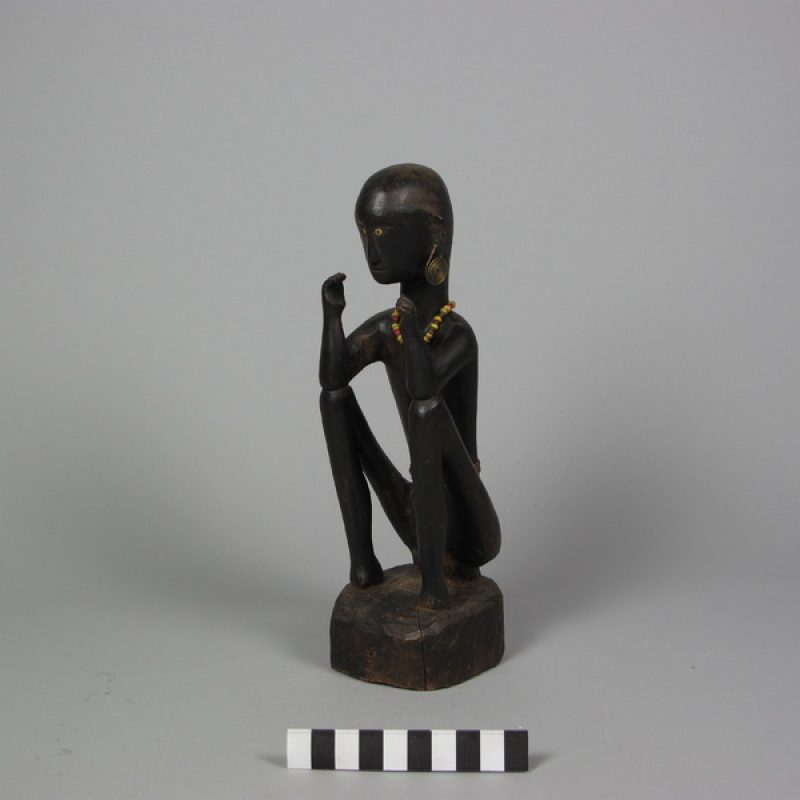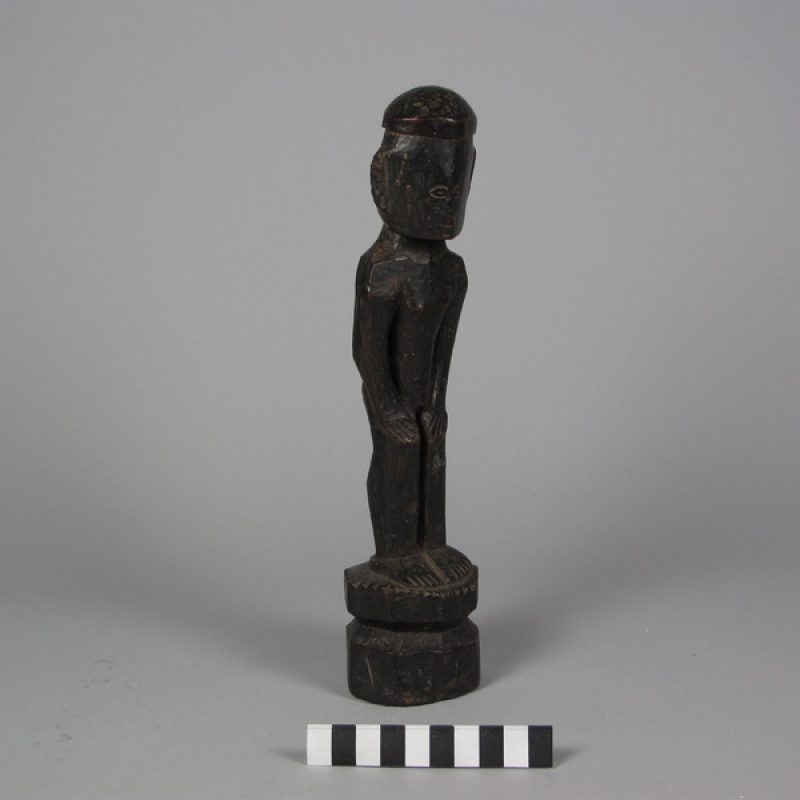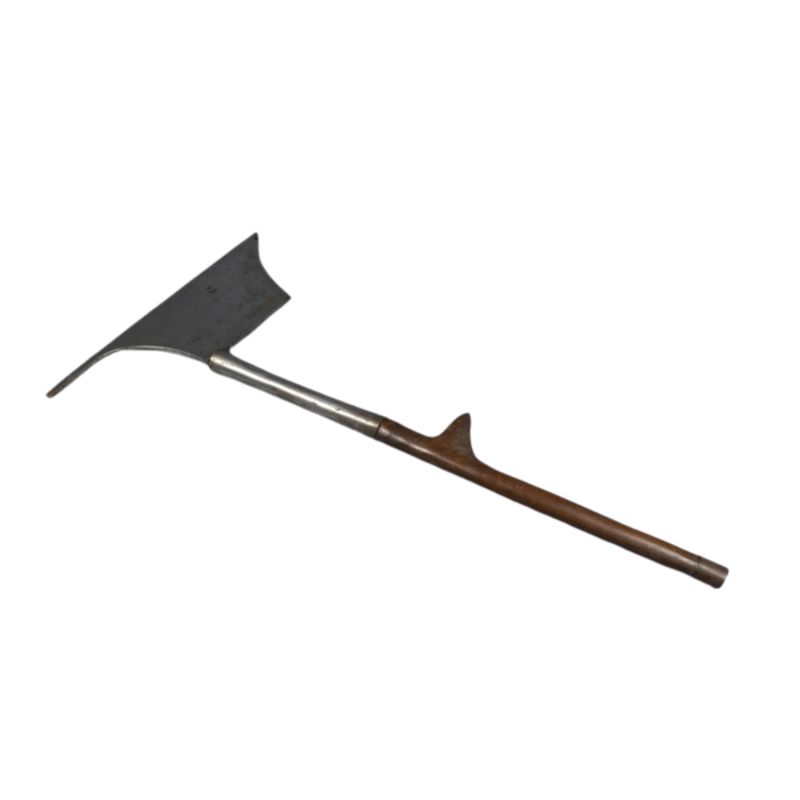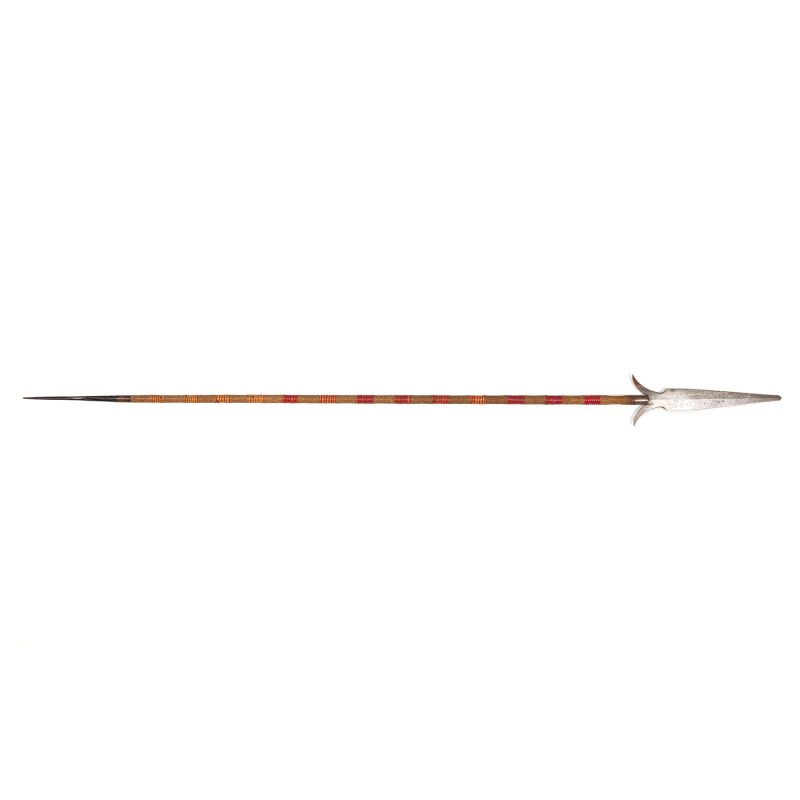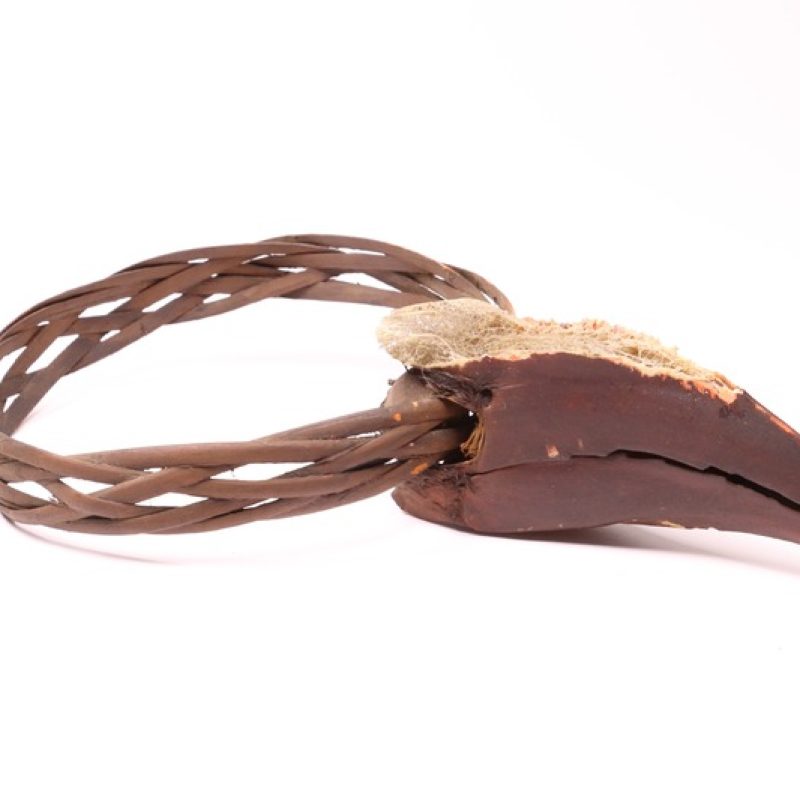Summary of results
This artefact was expressly designed to be displayed at the Philippines Exhibition in Madrid in 1887. The exhibition of models of indigenous constructions, along with some that imitated those of colonial manufacture, was intended to affirm the superiority of the colonizer, justifying the discourse of the civilizing mission.
Chronological reconstruction of provenance
The first record we have of this wood carving is in the Catalogue of the Philippines Exhibition held in the Retiro Park in Madrid during the summer of 1887, where it appears as ‘Idem id. Id. [Model of Igorot house] from the Banaue valley’ (Catalogue: 246). After the event, many of the artefacts remained in the Museo Biblioteca de Ultramar until it was closed in 1896, but this was probably not the case with the collection of which this artefact is a part, as it probably made its way to Barcelona after the exhibition was closed. The Museo Biblioteca de Ultramar was installed in the Palacio de la Minería, where these pieces were displayed during the exhibition. According to the museography of the Museum of Ethnology and World Cultures of Barcelona, the collection in which the artefact is included was exhibited during the 1888 Barcelona Universal Exposition, although there is no evidence of this and it is possibly an error.
In August 1895, the collection containing the artefact was without doubt already in Barcelona. Specifically, in the neighbourhood of Sant Gervasi, where the collector lived. Between October and November of the same year, a technical commission sent by the Board of Museums of Catalonia examined the collection and, in this occasion, considered that it was not suitable for inclusion in Catalan museums. A year after the loss of the Philippine colony, and perhaps for that reason, it was accepted and finally deposited in the Museo Histórico Arqueológico in 1900.
In 1902, according to the statistical yearbook of the city of Barcelona, the collection was housed in the Museo de Arte Decorativo y Arqueológico, located in the Palacio Real (now the building of the Parliament of Catalonia); in 1903, in the Museo de Objetos Curiosos y Hechos Memorables; and, in 1907, in the Museo de Arte Decorativo y Arqueológico. These last changes were merely nominal, because in practice the artefacts remained in the same place, i.e., in the Ciutadella building.
In 1932, the Museo de Arte Decorativo was dismantled and the collections were divided between the Archaeology Museum of Catalonia (MAC) and the National Art Museum of Catalonia (MNAC) for their creation. The collection probably ended up in the latter, given the fact that documents relating to it—basically reports of artefacts—can still be found in the museum’s archives.
According to one of these reports, before 1941, the collections were transferred from the National Art Museum of Catalonia to the Historical Archive of the City of Barcelona and the Museo Etnográfico. Although no ethnological or ethnographic museum is known to have existed at this time, according to the museum curators, the project already existed in the 1930s.
The artefacts probably remained in the storerooms of the Historical Archive until, before 1949, the Board of Museums transferred the collection to form the Ethnology Museum of Barcelona, where it remains to this day.
Estimation of provenance
We have no way of determining who the maker was, but we could hypothesize that the artefact was made in the province of Ifugao, where carving was a much more common practice than in other areas. It could have been made by the same craftsmen who made the Igorot anitos or figurines.
Possible alternative classifications
Model of Ifugao hut. Made to be exhibited at the Philippines Exhibition in Madrid.
Complementary sources
Bibliography:
Negociado de Estadística (1902). Anuari estadístic de la ciutat de Barcelona. Barcelona: Ajuntament de Barcelona. <http://hdl.handle.net/11703/94371>.
Negociado de Estadística (1907). Anuari estadístic de la ciutat de Barcelona. Barcelona: Ajuntament de Barcelona. <http://hdl.handle.net/11703/94376>.
Exposición General de las Islas Filipinas (1887). Catálogo de la exposición general de las Islas Filipinas celebrada en Madrid… el 30 de junio de 1887. Signatura: AHM/633416. Madrid: Biblioteca Nacional de España.
Sánchez Gómez, L. Á. (2003). Un imperio en la vitrina: El colonialismo español en el Pacífico y la Exposición de Filipinas de 1887. Madrid: CSIC Press.

